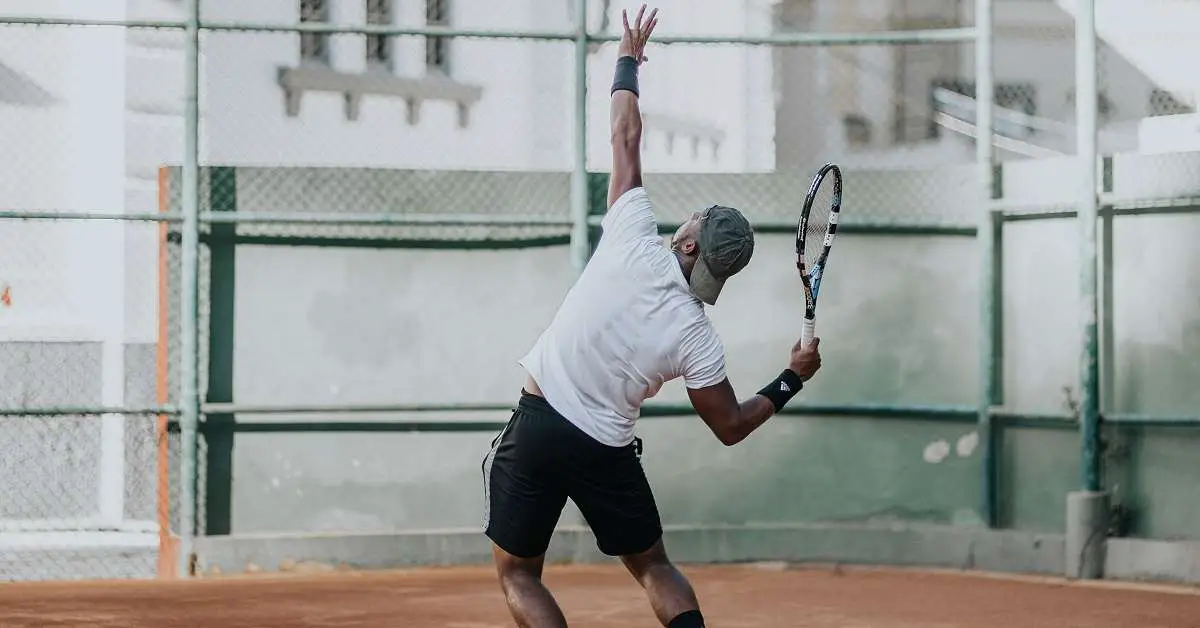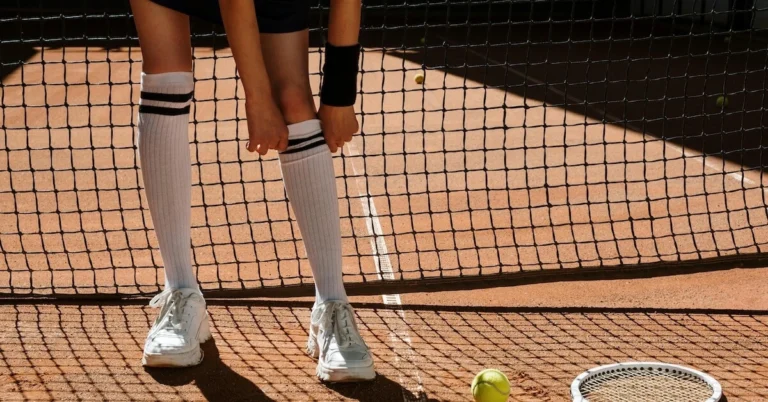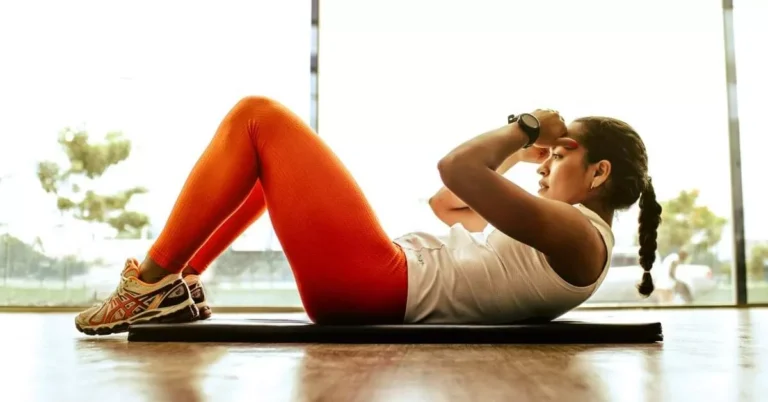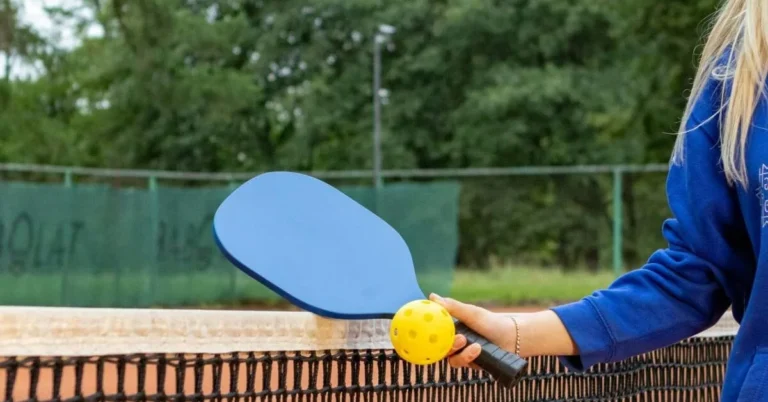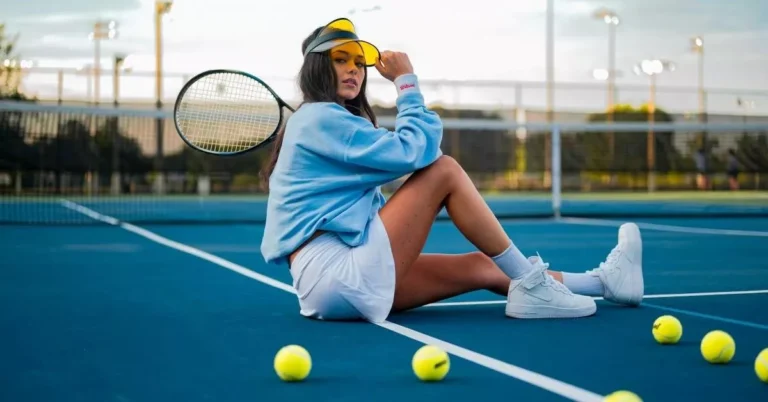Are you struggling with your tennis serve? Do you find it difficult to hit the ball with speed and accuracy? If so, you’re not alone. Many tennis players struggle with their serve, but with the right techniques and practice, you can improve your tennis serve speed and accuracy.
One of the most important factors in improving your tennis serve is technique. Proper technique can help you generate more power and accuracy, while reducing the risk of injury. This includes your grip, stance, and swing. By focusing on these elements, you can make small adjustments that can have a big impact on your tennis serve.
Pro:
✅ best all-rounder ✅ stability ✅ high support
Con:
❌ maybe you need some time to get used to it
Understanding the Basics of Tennis Serve
Improving your tennis serve speed and accuracy requires a solid understanding of the basics of tennis serve. The tennis serve is the most important shot in tennis, as it starts every point and can give you an advantage over your opponent. Here are the key points to keep in mind when learning the proper technique for serving:
Proper Form and Technique
Proper form and technique are crucial for developing a consistent and effective serve. The service motion consists of four main parts: the toss, the backswing, the forward swing, and the follow-through. Each part of the service motion should be executed with precision to ensure a smooth, powerful serve.
Learning the Service Motion
Learning the service motion can be challenging, but with practice, you can develop a consistent and effective tennis serve. Start by breaking down the service motion into its four main parts and practicing each part separately. Once you have mastered each part, put them together to create a fluid motion.
Toss Placement
The toss is the most important part of the service motion, as it sets up the entire tennis serve. The toss should be placed slightly in front of your body and at a height that allows you to make contact with the ball at the highest point possible. A good toss will help you generate more power and accuracy on your serve.
Knee Bend and Body Posture
Knee bend and body posture are important aspects of the service motion that can help you generate more power on your tennis serve. Bending your knees and aligning your body correctly for the serve allows your legs muscles and torso to accumulate energy, which can be transferred into the ball.
Types of Serves
There are three main types of tennis serves: the flat serve, the slice serve, and the kick serve. Each type of serve has its own unique characteristics and can be used to target different areas of the court. Learning how to execute each type of serve can give you an advantage over your opponent and make you a more well-rounded player.
Importance of Serve Speed and Accuracy
Having a powerful serve is an essential weapon in tennis. The serve is the only shot that you have complete control over and can dictate the point from the very start. The ability to hit a fast and accurate serve can give you a significant advantage over your opponent, making it harder for them to return your serve and giving you more opportunities to win points.
Tennis serve speed and accuracy are two critical factors that can make or break your game. A fast serve can help you win free points, while accuracy can allow you to place the ball in the right spot, making it difficult for your opponent to return the ball. A combination of both speed and accuracy can make your serve a formidable weapon.
Improving your serve speed and accuracy can help you take your game to the next level. With a faster and more accurate serve, you can put pressure on your opponent, forcing them to make mistakes and giving you more opportunities to win points. A powerful serve can also help you win more free points, allowing you to conserve energy and focus on other aspects of your game.
In addition to its offensive capabilities, a strong serve can also be a valuable defensive tool. By hitting a fast and accurate tennis serve, you can force your opponent to return the ball from a difficult position, giving you the upper hand in the point. A powerful serve can also help you recover from a defensive position, allowing you to get back into the point and take control.
The Art and Science Behind a Powerful Serve
Improving your serve speed and accuracy is a combination of art and science. It involves mastering the mechanics of your serve and building strength and explosive power. Here are some key factors to consider when trying to improve your serve:
The Art of the Serve
The art of the tennis serve involves mastering the technique and motion of your serve. A proper serve motion involves a fluid and explosive movement that generates power and speed. To improve your serve, focus on the following:
- Grip: The grip you use can affect your serve’s power, spin, and accuracy. A continental grip is a popular grip that can help you generate more power and spin on your serve.
- Toss: The toss is an essential part of your serve. A consistent toss will help you hit your serve with more accuracy. Practice your toss to make sure it’s consistent and in the right position.
- Motion: The motion of your serve should be fluid and explosive. Focus on generating power from your legs and hips and transferring it to your arm. Proper motion will help you generate more speed and power on your serve.
The Science of the Serve
The science of the serve involves understanding the mechanics and kinetic chain involved in a powerful serve. The kinetic chain refers to the transfer of energy from one part of your body to another. To improve your serve, focus on the following:
- Strength: Building strength in your legs, hips, and core is essential for a powerful serve. Strength training exercises like squats and lunges can help you generate more power and speed on your serve.
- Explosiveness: Explosive exercises like box jumps and plyometrics can help you generate more power and speed on your serve. These exercises focus on generating power quickly and explosively.
- Mechanics: Proper mechanics are essential for a powerful serve. Focus on using your legs and hips to generate power and transferring that energy to your arm. Proper mechanics will help you generate more speed and power on your serve.
Improving your tennis serve speed and accuracy is a combination of mastering the art and science of the serve. By focusing on your technique, building strength and explosiveness, and understanding the mechanics involved in a powerful serve, you can improve your serve and take your game to the next level.
Mastering the Tennis Serve Technique
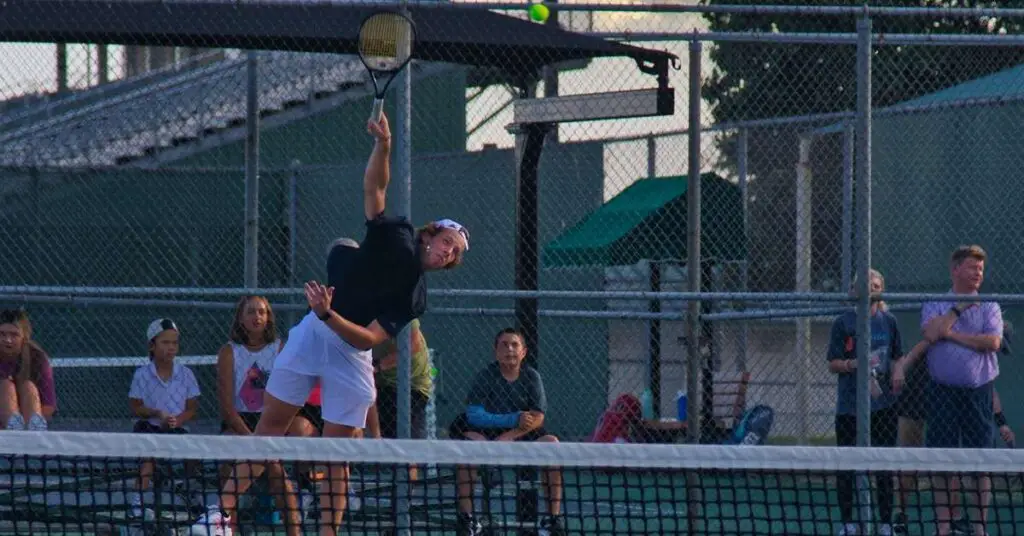
Improving your serve speed and accuracy requires mastering the proper tennis serve technique. This technique involves several key elements, including grip and toss, body position and movement, follow through and pronation, and the role of the racket.
Grip and Toss
The first step in mastering your tennis serve technique is to establish the proper grip and toss. The most common grip used for serving is the continental grip, which involves holding the racket with the base knuckle of your index finger on the third bevel of the racket handle. Once you have established your grip, you need to work on your ball toss. A good toss should be high enough to allow you to make contact with the ball at the highest point of your reach.
Body Position and Movement
Proper body position and movement are crucial for a successful tennis serve. Your stance should be balanced with your front foot pointing towards the right net post (for right-handers) and your back foot parallel to the baseline. As you begin your service motion, you should bend your knees and use your legs to generate forward momentum. Your upper body should remain upright, and your tossing arm should extend upwards in a straight line.
Follow Through and Pronation
Following through and pronating your wrist are essential elements of a powerful and accurate serve. As you make contact with the ball, you should extend your arm and follow through with your racket to complete the swing. Pronating your wrist at the end of the swing will help you generate more racket head speed and spin on the ball.
The Role of the Racket
The tennis racket plays a critical role in your serve technique. The racket should be held loosely in your hand, allowing for maximum wrist snap and racket head speed. The racket face should be slightly open at contact to create topspin on the ball, which will help it clear the net and land in the service box.
Training and Practice for Improvement
Improving your serve speed and accuracy requires consistent training and practice. In this section, we will cover some essential aspects of training and practice that will help you enhance your serve.
Warm-up and Conditioning
Before you start practicing your tennis serve, it is essential to warm up your body and stretch your muscles. A proper warm-up routine can help reduce the risk of injury and improve your performance. You can start with some light cardio exercises like jogging or jumping jacks to get your heart rate up. Then, you can move on to some dynamic stretches that focus on your shoulders, arms, and core.
In addition to warm-up exercises, strength training and conditioning can also help you improve your tennis serve. Exercises that target your upper body, such as push-ups, pull-ups, and shoulder presses, can help you build the necessary strength and power to hit a faster serve.
Target Practice and Consistency
To improve your serve accuracy, you need to practice hitting your targets consistently. You can set up targets on the court, such as cones or markers, and practice hitting them with your serve. Start with a close target and gradually move further away as you improve your accuracy.
Another way to improve your consistency is to focus on your ball toss. A consistent ball toss can help you hit a more accurate tennis serve. Practice your ball toss by aiming for a specific spot and adjusting your toss until you hit your target consistently.
Adjusting to Different Styles of Play
In addition to consistency and precision, it is also essential to adjust your serve to different styles of play. For example, if your opponent is returning your serve well, you may need to adjust your second serve to a higher percentage of first serves to avoid giving them an advantage.
Similarly, you may need to adjust your tennis serve to different court surfaces, such as clay or grass. On clay courts, a spin serve may be more effective, while on grass courts, a flat serve may be more effective.
Psychological Aspects of Serving

Serving is not just a physical activity, but also a mental one. The psychological aspects of serving can have a significant impact on your performance. Here are some factors to consider when it comes to the mental game of serving:
Confidence
Confidence is key when it comes to serving. Without confidence, you are more likely to make mistakes, miss your target, and struggle to generate power. To improve your confidence, try visualizing yourself hitting successful tennis serves. This can help you feel more confident and prepared when you step up to the line.
Pressure
Serving can be a high-pressure situation, especially in competitive matches. It’s important to learn how to manage pressure and stay calm under stress. One technique is to focus on your breathing and take deep breaths before each serve. This can help calm your nerves and keep you focused on the task at hand.
Mental Game
The mental game of serving involves staying focused and present in the moment. It’s important to avoid getting distracted by past mistakes or future outcomes. Instead, focus on the present and what you need to do to execute a successful serve.
Stress
Stress can have a negative impact on your serving performance. It’s important to find ways to manage stress and stay relaxed on the court. This can include techniques such as meditation, deep breathing, or visualization.
Preventing Injuries During Serve
Serving in tennis can put a lot of strain on your body, especially your shoulders, elbows, and wrists. Injuries can occur if you don’t take the necessary precautions to prevent them. Here are some tips to help you prevent injuries during your serve:
1. Warm-up Before You Serve
Warming up before you serve is essential to prevent injuries. Start with some light cardio exercises to get your heart rate up and increase blood flow to your muscles. Then, do some dynamic stretching exercises that target the muscles you use when you serve, such as your shoulders, arms, and back. This will help improve your flexibility and range of motion, which can reduce the risk of injury.
2. Use Proper Technique
Using proper technique is crucial to prevent injuries during your serve. Make sure you use the correct grip, body positioning, and racket choice to avoid unnecessary strain on your body. If you’re not sure about your technique, consider taking lessons from a tennis coach who can help you improve your form.
3. Strengthen Your Muscles
Strengthening your muscles can help prevent injuries during your serve. Focus on exercises that target the muscles you use when you serve, such as your shoulders, arms, and back. You can use weights, resistance bands, or your body weight to do these exercises. Be sure to start with light weights and gradually increase the weight as your muscles get stronger.
4. Rest and Recover
Rest and recovery are essential to prevent injuries. Make sure you take breaks between matches and practice sessions to give your body time to recover. If you feel any pain or discomfort during your serve, stop immediately and rest until the pain subsides. If the pain persists, consider seeing a doctor or physical therapist.
5. Consider Your Dominant Hand
If you’re left-handed, you may be at a higher risk of developing certain injuries, such as rotator cuff injuries. Make sure you take extra precautions to prevent these injuries, such as strengthening your shoulder muscles and using proper technique. If you’re right-handed, be sure to pay attention to your left arm and wrist, which can also be at risk of injury.
FAQ
What are some common mistakes to avoid when serving in tennis?
To avoid common mistakes when serving in tennis, make sure to keep your toss consistent and in the right place, maintain a relaxed grip on the racket, and avoid leaning too far forward or backward. Additionally, avoid overthinking your serve and rushing through the motion.
How can I improve my serve accuracy?
To improve your serve accuracy, focus on your technique and form. Make sure to keep your toss consistent and in the right place, maintain a high elbow throughout the serve, and follow through with your racket. Additionally, practice serving at different speeds and angles to improve your overall accuracy.
What are some exercises to increase serve speed in tennis?
To increase your serve speed in tennis, try exercises such as medicine ball throws, plyometric push-ups, and resistance band exercises. Additionally, work on improving your overall strength and conditioning through exercises such as squats, lunges, and core work.
What is the proper technique for a tennis serve?
The proper technique for a tennis serve includes a consistent toss, a high elbow throughout the motion, and a follow-through with your racket. Additionally, make sure to use your legs and core to generate power and maintain a relaxed grip on the racket. Practice proper technique regularly to improve your serve speed and accuracy.
What are some of your favorite tips or techniques for improving your tennis serve? Are there any specific drills or exercises that you’ve found particularly helpful in developing a more effective and consistent serve? Share your thoughts and experiences on the topic in the comments section below.

